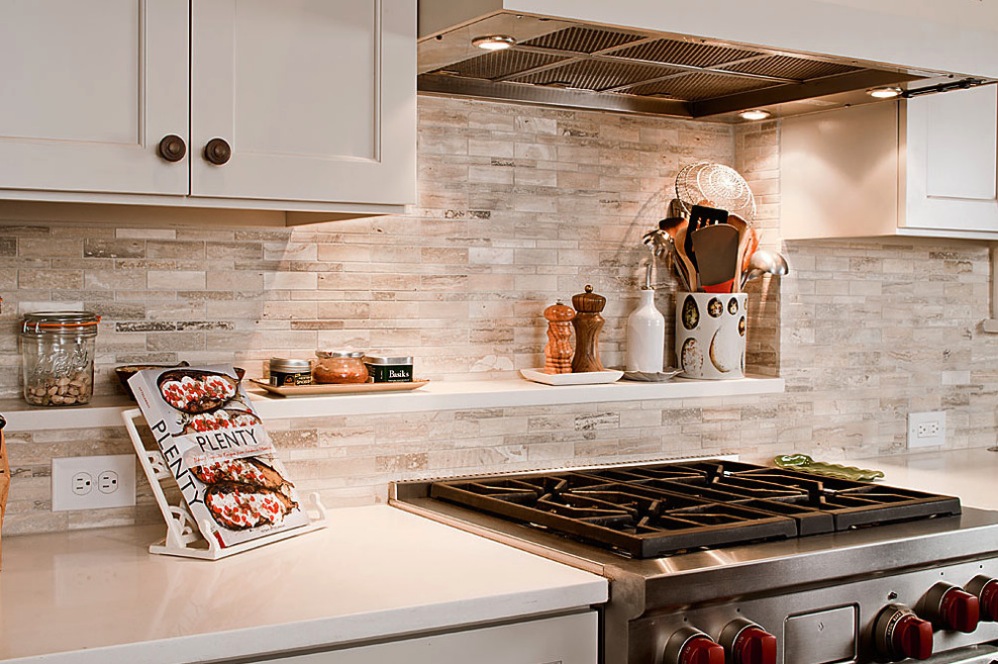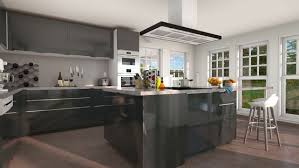The evolution of kitchen spaces reflects shifting lifestyles and design preferences, influencing the dimensions and layout of modern homes. Understanding the trends in average kitchen sizes provides valuable insights into how these spaces are utilized and designed. From maximizing efficiency to accommodating social interactions, these trends shape not only the physical dimensions but also the functional and aesthetic considerations of contemporary kitchen design.
Average Kitchen Size
The average size of kitchens has seen significant changes over the years, influenced by various factors such as architectural trends, demographic shifts, and evolving lifestyle preferences. Traditionally, kitchens were designed primarily for cooking and food preparation, often occupying smaller spaces within homes. However, as kitchens have evolved into central hubs for family gatherings, socializing, and even remote work, their size and layout have expanded accordingly. Understanding the evolving preferences of homeowners is crucial for adapting designs to accommodate the average kitchen size trends.
A well-designed kitchen requires a minimum space of 5 feet in width and 8 feet in length. The standard kitchen size is typically 8 feet by 10 feet. Countertops generally range in height from 32 to 35 inches.

1. Key Factors to Consider in Standard Kitchen Measurements and Dimensions
2. Understanding the Golden Triangle Rule in Kitchen Design
3. Exploring Standard Kitchen Measurements and Dimensions
We have progressed significantly from cooking on traditional chulhas to the modern convenience of continuous gas delivery through pipelines.
The kitchen is a vital space in every home, where meals are prepared, and loved ones gather for socializing. A well-designed kitchen is practical, efficient, and inviting.
As times have progressed, gender roles and responsibilities have seen a mutual exchange.
As society moves forward, individuals may lack the time or mental capacity to navigate the complexities of managing each other’s responsibilities, potentially leading to chaos and frustration.
Modular kitchens are often celebrated as the ultimate in efficiency, aesthetics, and functionality for those seeking a well-organized home.
It’s no coincidence that you find it effortless to navigate a modular kitchen, even during the busiest times, thanks to years of extensive research and development.
The engineers and designers of kitchens have established standard dimensions to enhance the kitchen experience, ensuring exceptional functionality and design.
If you’re planning to enhance the ergonomic efficiency of your kitchen with modular design, consider the pivotal role of modular kitchen dimensions. Accurate kitchen measurements are crucial for designing and placing various kitchen modules effectively.
When designing a kitchen, several factors need consideration, such as layout, appliances, storage, and more. One crucial aspect is the kitchen size, influencing both its functionality and aesthetics.
What factors are important to consider in standard kitchen measurements and dimensions?
When determining standard kitchen size, measurements, and dimensions, several key factors must be considered. These include:
Factors to consider include:
– The number of people regularly using the space
– The required amount of storage
– The type of appliances used
– The arrangement of the space
When designing a kitchen, it’s crucial to allocate enough space for two people to work side by side without constraints.
Standard kitchen size is determined by these factors as they directly impact the kitchen experience.
A critical principle guiding modular kitchen design is known as the golden triangle rule. Let’s explore its significance. The increasing demand for open-plan layouts is reshaping the Average Kitchen Size in contemporary home designs.

What is the Golden Triangle Rule?
The Golden Triangle Rule dictates that an imaginary triangle should be formed between your refrigerator, stove, and sink in the kitchen. This arrangement optimizes efficiency and smooth movement during food preparation and cooking.
This is also a crucial consideration when discussing standard kitchen sizes.
What are the typical measurements and dimensions for a standard kitchen?
The standard size of a kitchen varies depending on the country or region. In India, for instance, a typical small kitchen averages about 200 square feet (18 square meters).
A medium-sized kitchen typically measures 300 square feet (27 square meters), while a large kitchen spans around 400 square feet (37 square meters).
Apart from overall size, it’s crucial to consider specific dimensions such as countertop height, cabinet depth, fridge width, oven dimensions (width/height/depth), sink dimensions (width/depth/height), and cooktop dimensions (width/height).

Dimensions for Countertops and Sinks
The standard height of the kitchen countertop and sink will vary based on the kitchen’s size.
In a small kitchen, there may only be space for a single sink, whereas a larger kitchen could accommodate multiple sinks or an oversized island featuring a sink. The countertop should be sufficiently spacious to accommodate appliances and provide ample prep space, ensuring comfortable movement for everyone.
Likewise, the kitchen countertop height should be suitable for both tall and short individuals to comfortably interact with the counter.
Considering the average height of Indians, which is assumed to range between 5.5 to 6.0 feet, the standard height for a kitchen countertop is typically around 24 inches or 2 feet. This provides an optimal space for a comfortable cooking experience.
The ideal kitchen counter dimensions are approximately 34 inches, providing ample space to move around while leaving sections available for keeping cooking ingredients within reach.
The typical depth of the countertop is approximately 23 inches.
Aligning the measurements of the kitchen countertop with the standard kitchen size ensures that activities carried out on the countertop are more enjoyable and efficient, given its central role in kitchen interactions.
Measurements for Wall Cabinets
Wall cabinets are essential components of kitchen design, offering storage for dishes, cookware, food items, and a space to showcase decorative items.
Wall cabinets vary in size, but within the standard kitchen framework, most are typically around 30 inches wide and 12 inches deep.
Some wall cabinets may be taller than others, so it’s important to measure the height of the installation area before selecting a cabinet style.
Measurements for Base Cabinets
Base cabinets are a crucial component of kitchen design, offering storage and workspace for meal preparation while accommodating appliances such as ovens and dishwashers.
Base cabinets vary in size, but for standard kitchen dimensions, they are typically 36 inches wide and 24 inches deep. Like wall cabinets, the height of base cabinets can differ, so it’s essential to measure the installation area before selecting a style. The Average Kitchen Size has grown over the years to accommodate modern families’ evolving needs for both functionality and social interaction.
Measurements for Kitchen Islands
A kitchen island offers additional prep space, storage, and seating, and can also accommodate appliances such as microwaves or wine refrigerators.
Kitchen islands are available in various sizes, but typically, standard kitchen islands range from 4 feet to 8 feet in length, with a crucial consideration of being 2 feet wider than their length.
When selecting an island size, it’s crucial to ensure ample clearance around it for unrestricted movement. In terms of standard kitchen dimensions, the average clearance around a kitchen island is typically 42 inches.
Measurements for Backsplashes

Backsplashes protect walls from splatters and enhance kitchen decor. They usually range in width from 4 inches to 6 inches, with lengths varying based on desired coverage.
Typically, backsplashes are between 30 inches to 36 inches long, though some can extend up to 54 inches. For kitchens with taller cabinetry, opting for a longer backsplash can help fill empty spaces effectively.
Measurements for Kitchen Windows
Kitchen windows offer natural light, ventilation, and outdoor views. They vary in size, but a standard kitchen window is typically 30 inches wide and 36 inches tall.
In a small kitchen, there may only be enough space for a single window. Larger kitchens can accommodate multiple or oversized windows that extend from floor to ceiling.
Breakfast Counter Dimensions
A breakfast counter is a fantastic addition to any kitchen design. It offers additional prep space, storage, and seating, making it perfect for quick meals or casual gatherings with family and friends.
Breakfast counters come in a range of sizes, but the standard kitchen breakfast counter is usually between 4 and 8 feet long.
The height of the counter will vary based on the stools or chairs used; however, most counters are typically between 34 and 36 inches tall.
When selecting a breakfast counter size, it’s crucial to ensure enough clearance around it for easy movement. There is a clearance of 42 inches around a breakfast counter.
Conclusion
Understanding the trends in average kitchen size offers valuable insights into current design preferences and practical implications for homeowners. As kitchens continue to evolve from purely functional spaces to central hubs for family gatherings and entertaining, the emphasis on optimizing space and functionality becomes increasingly important. By integrating these insights into kitchen design, homeowners can create environments that not only meet their daily needs but also enhance their overall living experience.







